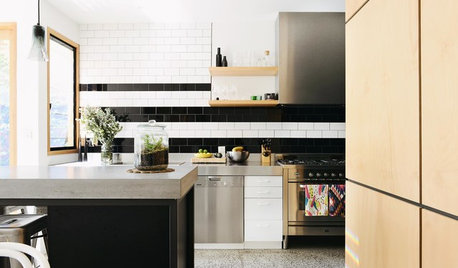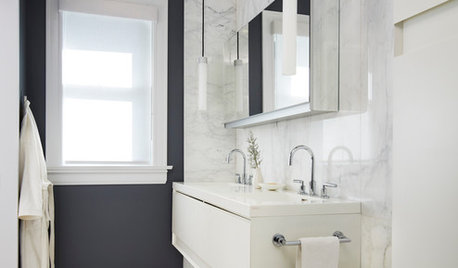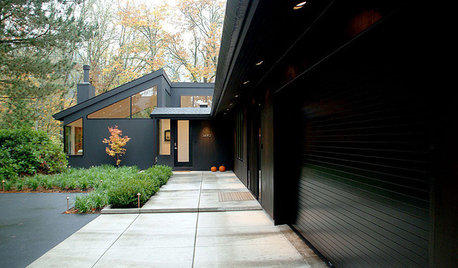Volcanic Black Sand
boizeau
15 years ago
Related Stories

COLOR10 Pair-Ups for Black in the Kitchen
Combine black with other colors to add drama, polish and modernity. It also can make a kitchen look more spacious
Full Story
COLORWake Up Your Woodwork With Black
Strike a dramatic note with black window frames, shelves, stairs and more, making features stand out or blend in
Full Story
COLOR11 Reasons to Paint Your Ceiling Black
Mask flaws, trick the eye, create drama ... a black ceiling solves a host of design dilemmas while looking smashing
Full Story
COLORBathed in Color: When to Use Black in the Bath
Dare to bring black in for a dramatic and elegant bath that's different from all the rest
Full Story
FRONT DOOR COLORSFront and Center Color: When to Paint Your Door Black
Love the idea of a black front door? Here are 8 exterior palettes to make it work
Full Story
FLOORSDrama’s Afoot With Striking Black Floors
Be bold. Be brave. Drench your floors in black for a memorable interior scene
Full Story
COLORHow to Add Just the Right Amount of Dramatic Black
Done right, black can add punch and personality to just about any room. Here’s how to go over to the dark side in style
Full Story
DECORATING GUIDESGo Bold with Black and Yellow
Buzzz: Black and Yellow Aren't Just for the Bees
Full Story
MOST POPULAR11 Reasons to Paint Your Interior Doors Black
Brush on some ebony paint and turn a dull doorway into a model of drop-dead sophistication
Full Story
EXTERIORSHome Noir: Black Exteriors Emerge From the Shadows
People are darkening their doorsteps more and more around the U.S. — but is the trend a bright idea?
Full Story







muddydogs
boizeauOriginal Author
Related Professionals
Saint Louis Park Landscape Architects & Landscape Designers · Saint Louis Park Landscape Architects & Landscape Designers · Washington Landscape Architects & Landscape Designers · Choctaw Landscape Contractors · Deerfield Beach Landscape Contractors · Hickory Hills Landscape Contractors · Panama City Beach Landscape Contractors · South Hackensack Landscape Contractors · South Lyon Landscape Contractors · Vineyard Landscape Contractors · New Carrollton Landscape Contractors · Shenandoah Landscape Contractors · Georgetown Fence Contractors · Goose Creek Fence Contractors · Sioux City Fence Contractorsmuddydogs
boizeauOriginal Author
lilydude
Embothrium
buyorsell888
boizeauOriginal Author
Embothrium